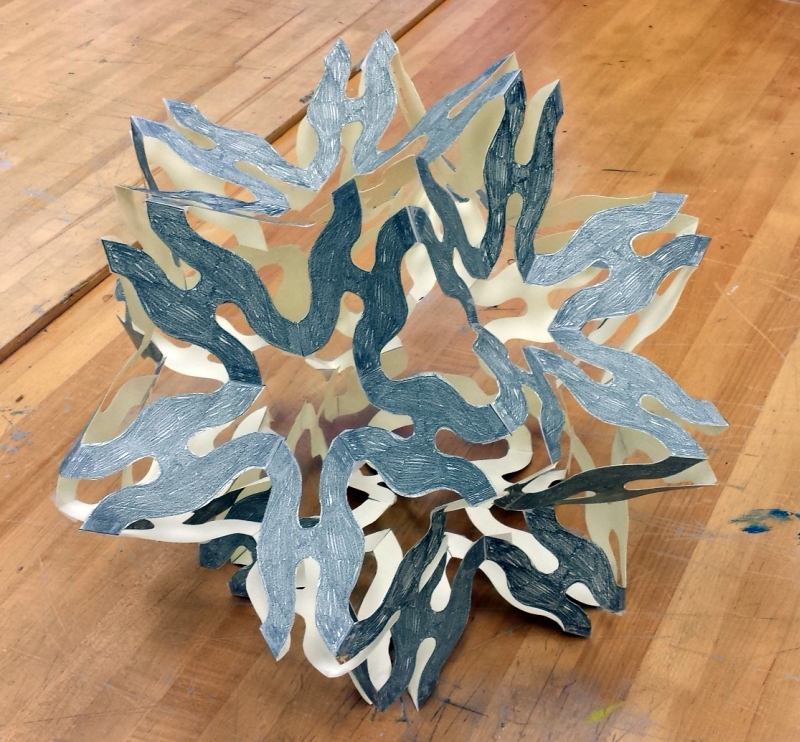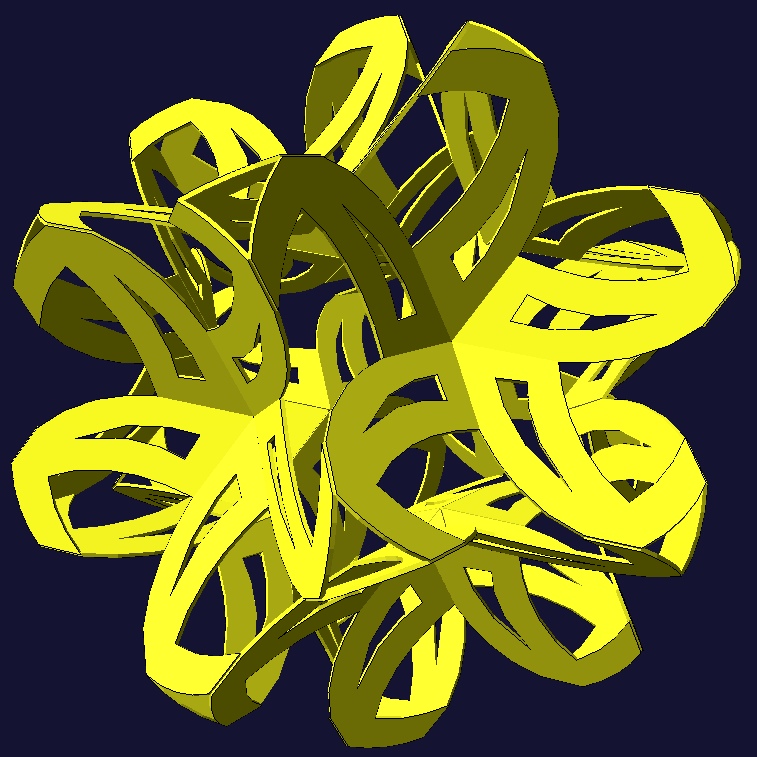
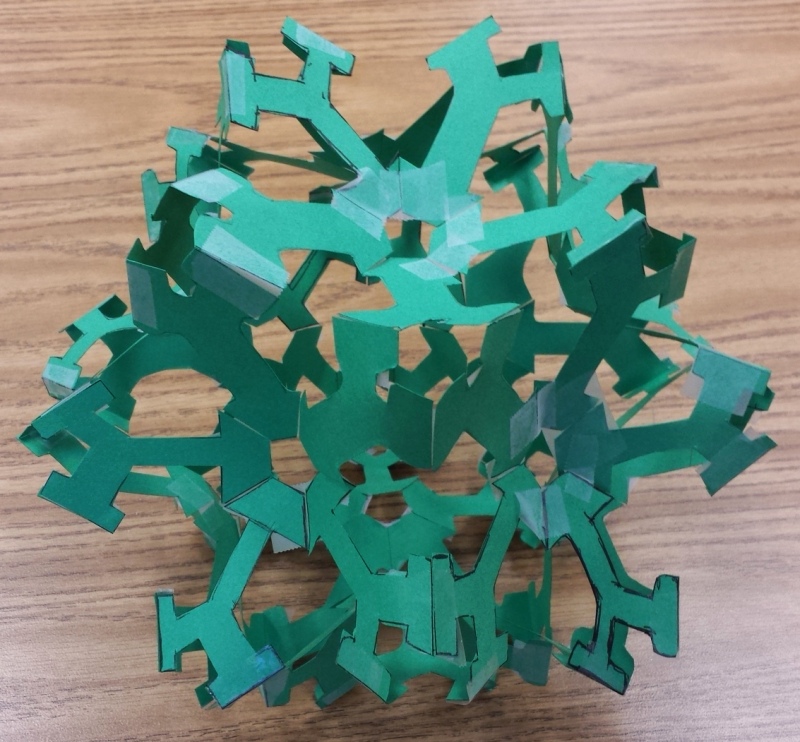
1. We assume students have already built the Autumn sculpture, so are familiar with its structure and how its parts connect.Part A: Design
2. Allow time to make photocopies in the middle of this workshop.
3. The design and assembly can be naturally split over two days, giving students more design time.

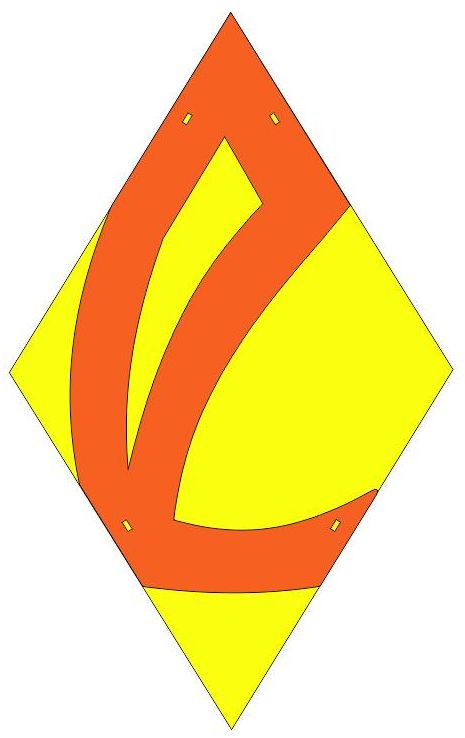
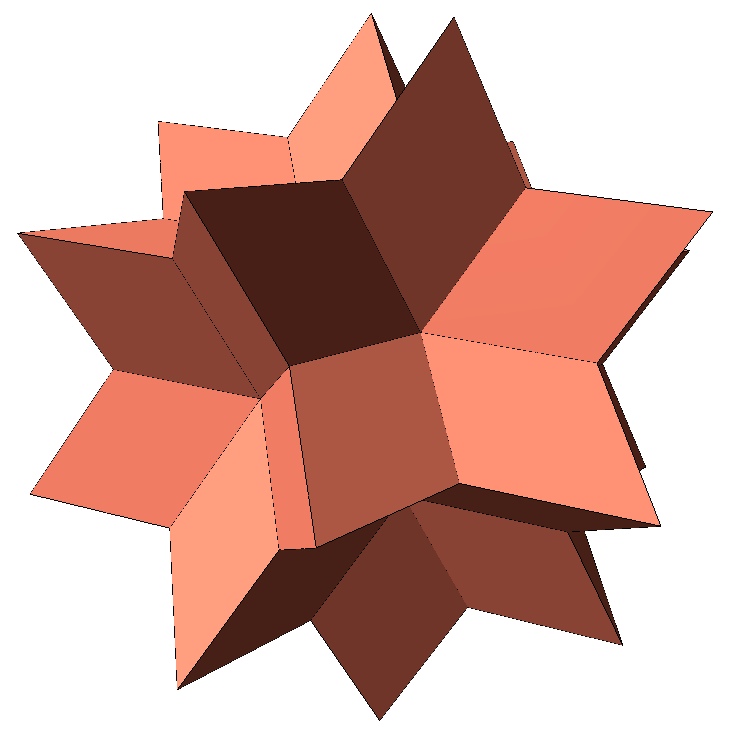
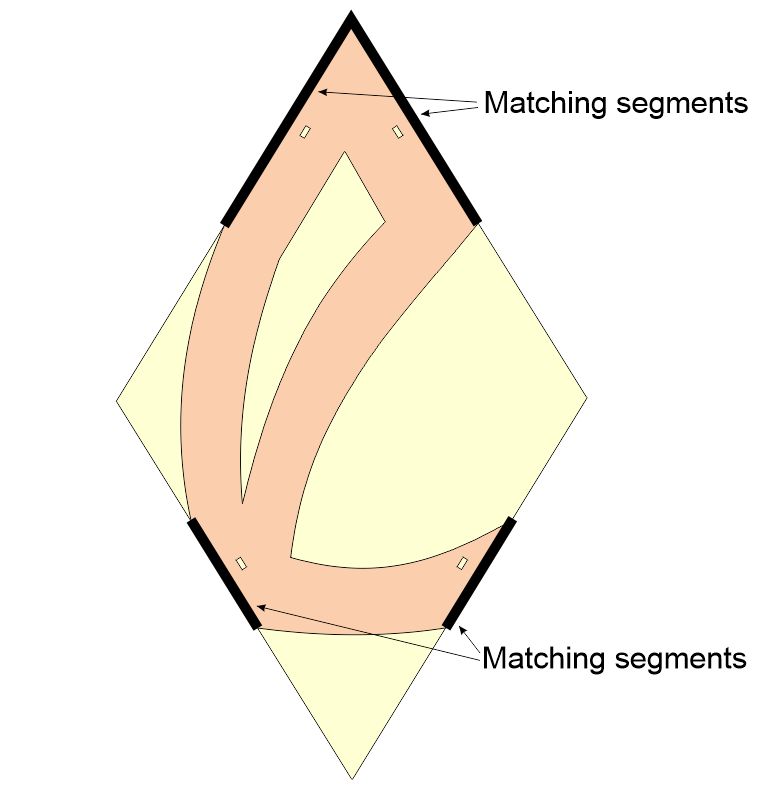
8. Students can then draw their own curves that connect the
segments. Suggest that they shade in the part to make clear
which regions, if any, are holes. Guide them to visualize
what their finished sculpture would look like if assembled from
sixty copies of the piece they designed. Point out that
there is also an engineering issue: the shape can not be too thin
or the part will flex and sculpture will not be rigid.
